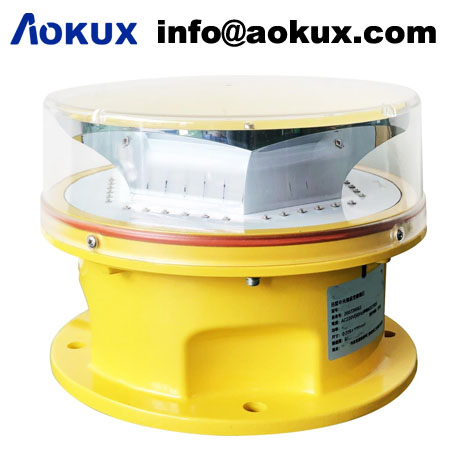The Importance of Medium Intensity Obstruction Lights in Aviation Safety
Introduction
Medium intensity obstruction lights (MIOLs) are an essential safety feature in aviation, particularly for low-flying aircraft. These warning lights play a critical role in marking obstacles such as communication towers, wind turbines and buildings that can pose a significant risk to air navigation. In this article, we will discuss the importance of MIOLs in aviation safety.
What Are Medium Intensity Obstruction Lights?
Medium intensity obstruction lights (MIOLs) are lighting devices designed to draw attention to tall or elevated structures that could be hazardous to air navigation. They are usually placed on top of tall structures and emit white light. The Federal Aviation Administration (FAA) classifies MIOLs into three categories – Type A, Type B and Type C. Type A is the brightest, while Type C is the dimmest.

Importance of MIOLs in Aviation Safety
Preventing Collisions
The primary function of MIOLs is to prevent collisions between aircraft and tall structures. These lights enable pilots to detect obstacles during periods of low visibility such as fog, bad weather conditions, or at night. MIOLs provide a clear visual indication of the presence of tall structures that could otherwise go unnoticed by pilots.
Enhancing Airspace Safety
Besides preventing collisions, MIOLs help optimize airspace usage. They allow aircraft to navigate safely around tall structures without having to significantly deviate from their flight paths. This reduces congestion in the sky and enhances the overall safety of air travel.
Medium Intensity Obstruction Lights
|
Medium Intensity Obstruction Light
|
Complying with Regulations
Regulatory bodies such as the FAA require the installation of MIOLs on tall structures that exceed a certain height. Failure to comply with these regulations could result in significant penalties or even legal action. Therefore, it is essential to install MIOLs not just for safety reasons but also to avoid non-compliance issues.
How Do MIOLs Work?
MIOLs are usually powered by electricity, but some models may also use solar panels or batteries. The lights are mounted at the highest point of tall structures and are visible from a distance of up to 10 miles. MIOLs can operate in two modes - steady-burning or flashing.
Steady-burning lights are continuously on and are used during the day to provide constant visibility of the structure. Flashing lights are used at night, and they flash at regular intervals of 40 to 60 times per minute. This helps to distinguish them from other lights and signals.
Types of Medium Intensity Obstruction Lights
As mentioned earlier, MIOLs are classified into three categories - Type A, Type B, and Type C. Type A is the brightest, with a minimum intensity of 20,000 candelas. These lights are used for structures that exceed 500 feet above ground level (AGL) and are located near airports or heliports.
Type B lights have a minimum intensity of 2,000 candelas and are used for structures that exceed 200 feet AGL. They are typically used for structures located within ten miles of an airport.
Type C lights are the least bright, with a minimum intensity of 32 candelas. They are used for structures that exceed 100 feet AGL and are located outside ten miles of an airport.
Conclusion
In conclusion, medium intensity obstruction lights play a crucial role in ensuring aviation safety. They warn pilots of the presence of tall structures, optimize airspace usage, and prevent collisions between aircraft and structures. The correct installation, maintenance, and operation of MIOLs are essential to ensure their effectiveness. Aircraft owners, operators, and regulators must work together to ensure the continued safety of air travel.

